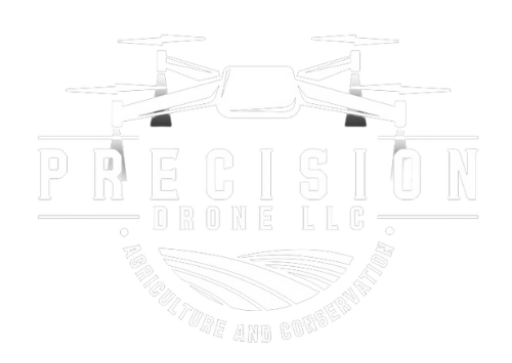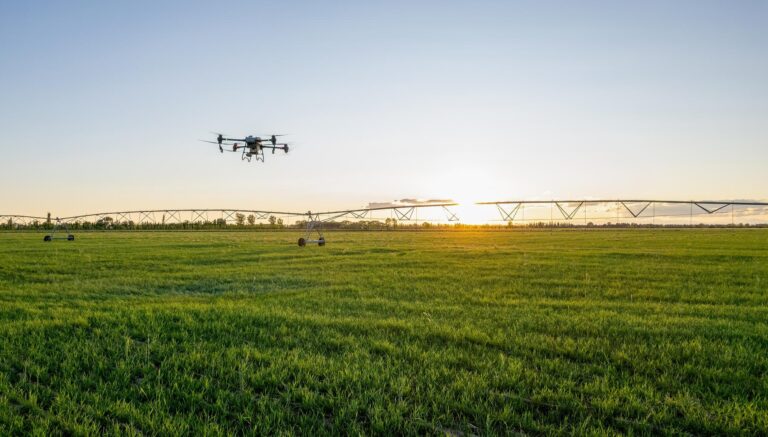Unlocking the Future of Conservation: The Role of Drones in Resource Management
In an era where technological advancements are pivotal to sustainable development, drones are transforming the landscape of resource management and conservation. As the demand for more efficient and eco-friendly practices grows, agricultural drone services are at the forefront, offering unprecedented precision and innovation. These aerial tools are redefining how we monitor crop health, manage water resources, and conduct environmental surveys, providing invaluable data that empowers decision-makers to optimize practices. At Precision Drone LLC, we are committed to supporting Michigan’s agricultural and environmental sectors by delivering cutting-edge solutions that enhance productivity and sustainability. Join us as we explore the transformative impact of drones in conservation, bringing a new era of efficiency and care for our natural resources.
The Evolution of Drone Technology
The emergence of drones has revolutionized various fields, from military applications to agricultural practices. This evolution has been marked by significant advancements in drone capabilities and their impact on resource management.
From Military to Agriculture
Drones, initially developed for military purposes, have found a significant role in agriculture. Originally used for reconnaissance and surveillance, these unmanned aerial vehicles (UAVs) have transitioned to addressing agricultural challenges. Today, drones facilitate precision agriculture by providing detailed aerial images and real-time data. This shift has allowed farmers to monitor large swathes of land efficiently, identifying issues quicker than traditional methods.
In agriculture, drones are not just about surveillance; they are about transforming the way farmers manage their crops. By capturing high-resolution images, drones help in assessing crop health, estimating yields, and managing irrigation. These capabilities are invaluable in optimizing agricultural practices to increase productivity.
Moreover, drones have simplified access to remote or difficult-to-reach areas, making it easier for farmers to manage resources effectively. Drones have made it possible to monitor fields that would otherwise require significant manpower and time, reducing labor costs and enhancing efficiency.
Key Developments in Drone Capabilities
The capabilities of drones have expanded dramatically in recent years. Technological advancements have led to drones equipped with sophisticated sensors, cameras, and GPS systems, enhancing their operational range and functionality. These developments have made drones indispensable for precision farming.
-
Sensors: Drones now come with multispectral and thermal sensors that help in assessing plant health and soil conditions.
-
Autonomous Flight: Drones can perform pre-programmed routes, enabling consistent monitoring without manual intervention.
-
Data Analytics: The integration of AI and machine learning allows drones to provide actionable insights from the data collected.
These innovations have improved the accuracy of data collection, enabling farmers to make informed decisions about resource allocation. As a result, drones have become critical tools in the drive towards sustainable agriculture.
Impact on Resource Management
Drones are reshaping resource management by providing detailed, real-time data that was previously unattainable. Their ability to deliver precise information has led to better decision-making and resource allocation. For instance, in water management, drones can identify areas of water stress, ensuring efficient water usage.
Drones also play a vital role in land assessment and planning. By mapping large areas quickly and accurately, they allow for the effective management of natural resources. This capability is crucial for maintaining ecological balance and planning conservation efforts.
Furthermore, the adaptability of drones in various terrains and climates makes them ideal for diverse applications, from monitoring wildlife habitats to assessing environmental damage. Their impact on resource management is profound, offering a sustainable pathway to managing our planet’s resources.
Benefits of Drones in Conservation
Drones offer significant benefits in conservation, enhancing the ability to monitor and manage natural resources effectively. These tools are crucial for ensuring the long-term health and sustainability of our environment.
Enhanced Monitoring and Data Collection
Drones have revolutionized environmental monitoring by offering an aerial perspective that was previously difficult to achieve. Equipped with high-resolution cameras and sensors, they collect data that is critical for environmental analysis. This capability allows for the continuous monitoring of large and inaccessible areas.
Drones can capture detailed images and videos of ecosystems, providing insights into changes over time. These observations are crucial for understanding the impacts of human activities and natural processes on the environment. By analyzing this data, conservationists can develop strategies to mitigate negative effects.
Additionally, drones facilitate biodiversity monitoring by identifying species and tracking movements. This information is vital for protecting endangered species and managing habitats effectively. The real-time data collection and analysis offered by drones are invaluable tools for conservation efforts.
Precision in Resource Allocation
The precision offered by drones in resource allocation cannot be overstated. Drones enable targeted interventions, reducing wastage and improving efficiency. This precision is particularly beneficial in managing agricultural resources, such as water and fertilizers.
By pinpointing areas of need, drones ensure that resources are applied where they are most effective. This targeted approach reduces costs and minimizes environmental impact, promoting sustainable practices. For instance, by identifying areas of nutrient deficiency, drones help optimize fertilization efforts.
Furthermore, drones allow for the efficient distribution of resources across large areas, ensuring that conservation efforts are both effective and economical. By enhancing the precision of resource allocation, drones contribute to the sustainable management of natural resources.
Long-Term Environmental Impact
The long-term environmental impact of using drones in conservation is substantial. Drones provide data that supports informed decision-making and sustainable practices, leading to improved environmental outcomes. This data-driven approach is essential for long-term conservation planning.
Drones enable continuous monitoring, allowing conservationists to track changes and trends over extended periods. This information is crucial for assessing the effectiveness of conservation strategies and making necessary adjustments.
Moreover, the real-time data provided by drones helps mitigate the impact of natural disasters and human activities on the environment. By facilitating rapid response and informed decision-making, drones play a pivotal role in preserving ecosystems and promoting biodiversity.
Agricultural Drone Services
Agricultural drone services have become essential in modern farming, offering innovative solutions to traditional challenges. These services enhance productivity and sustainability by optimizing crop health, improving pest and disease control, and offering competitive pricing options.
Optimizing Crop Health
Drones are transforming how farmers assess and manage crop health. With advanced imaging and sensing capabilities, drones provide a detailed view of fields, identifying issues such as nutrient deficiencies or disease outbreaks early on.
By flying over fields and capturing high-resolution images, drones can detect subtle changes in vegetation that indicate health problems. This early detection allows farmers to take timely action, minimizing crop loss and maximizing yield.
Moreover, drones facilitate the mapping of fields to assess variations in soil quality and moisture levels. This information is crucial for tailoring interventions to specific areas, ensuring optimal growing conditions. By optimizing crop health, drones contribute to more sustainable and productive farming practices.
Efficient Pest and Disease Control
Drones offer a revolutionary approach to pest and disease control in agriculture. Equipped with specialized sensors and imaging technology, they identify infestations and disease outbreaks quickly and accurately. This capability allows for targeted interventions, reducing the need for widespread chemical applications.
By pinpointing affected areas, drones enable farmers to apply pesticides and other treatments precisely where needed. This targeted approach minimizes environmental impact and reduces the cost of pest control, making it a more sustainable option.
Furthermore, drones can be used to monitor the effectiveness of pest and disease control measures, ensuring that interventions are successful. This ongoing assessment is vital for maintaining healthy crops and preventing future outbreaks.
Agriculture Drone Services Pricing
The pricing of agriculture drone services varies depending on the specific needs and scope of the project. Several factors influence pricing, including the type of drone used, the area to be covered, and the complexity of data analysis.
-
Drone Type: More advanced drones with specialized sensors and capabilities typically cost more.
-
Area Coverage: Larger areas require more flight time and resources, impacting overall pricing.
-
Data Analysis: Services that include in-depth data analysis and reporting may incur additional costs.
Agricultural drone services offer flexible pricing models to accommodate different budgets and needs. By understanding these factors, farmers can select services that align with their goals while optimizing cost and efficiency.
Case Studies in Resource Management
Case studies in resource management highlight the transformative impact of drones in conservation and agriculture. These examples provide valuable insights into successful projects and future prospects.
Successful Projects in Michigan
In Michigan, drones have played a pivotal role in enhancing resource management. These projects demonstrate the versatility and effectiveness of drones in various applications. Michigan’s diverse landscape provides an ideal setting for showcasing drone technology’s benefits.
One successful project involved using drones to monitor water levels and quality in Lake Michigan. This project provided critical data for managing water resources and addressing environmental concerns. The insights gained from this project have informed strategies to improve water management across the state.
-
Enhanced water quality monitoring through real-time data collection
-
Improved resource allocation based on detailed environmental assessments
-
Informed policy decisions and conservation strategies
Conservation Efforts Enhanced by Drones
Drones have significantly enhanced conservation efforts, providing tools for better environmental management and protection. By offering detailed insights into ecosystems, drones support targeted conservation strategies.
In wildlife conservation, drones have been used to monitor endangered species and their habitats. This data is crucial for developing effective protection plans and ensuring long-term sustainability. For example, drones have been employed to track migratory patterns and habitat use, providing valuable information for conservation initiatives.
-
Real-time monitoring of wildlife populations
-
Enhanced mapping of habitats and ecosystems
-
Support for developing targeted conservation strategies
Future Prospects and Innovations
The future prospects for drones in resource management are promising, with ongoing innovations poised to expand their applications. Emerging technologies and improved capabilities will further enhance the role of drones in conservation and agriculture.
One area of potential growth is the integration of AI and machine learning with drone technology. These advancements will enable more sophisticated data analysis and predictive modeling, improving decision-making in resource management.
-
Enhanced data processing and analysis capabilities
-
Increased automation and efficiency in monitoring and management tasks
-
Broader applications across diverse environmental and agricultural settings
As drone technology continues to evolve, its impact on resource management will only grow, offering new opportunities for innovation and sustainability.




